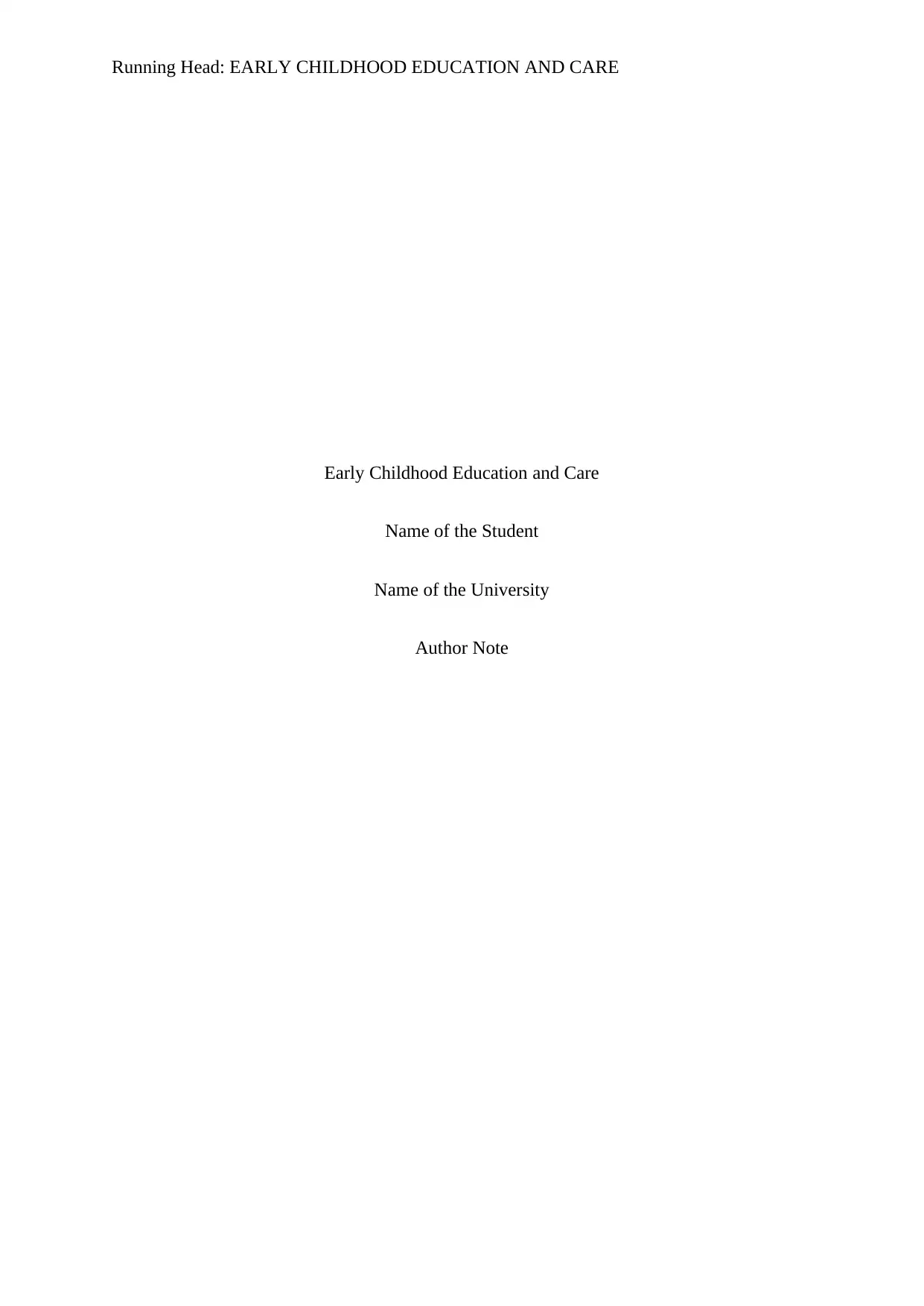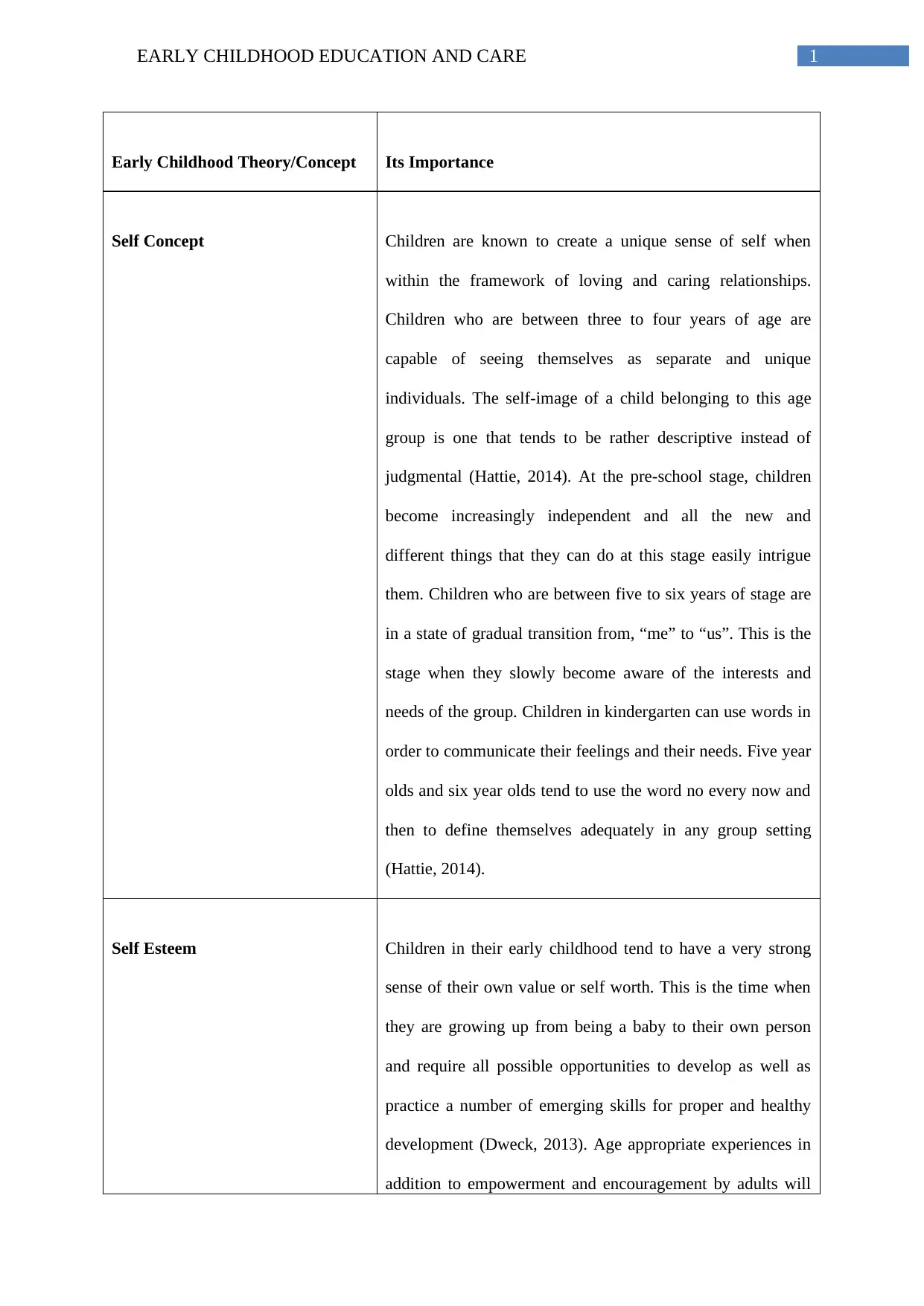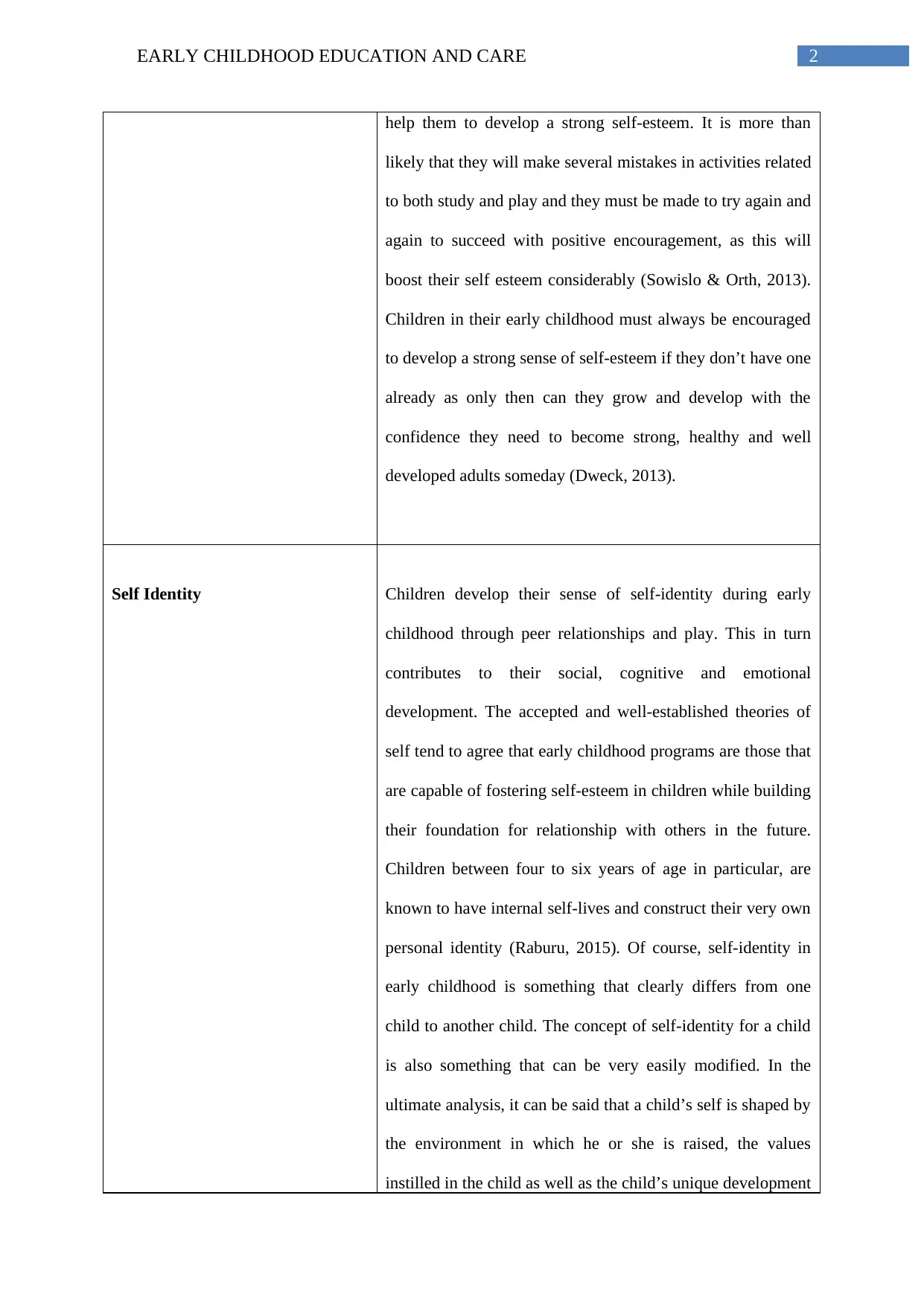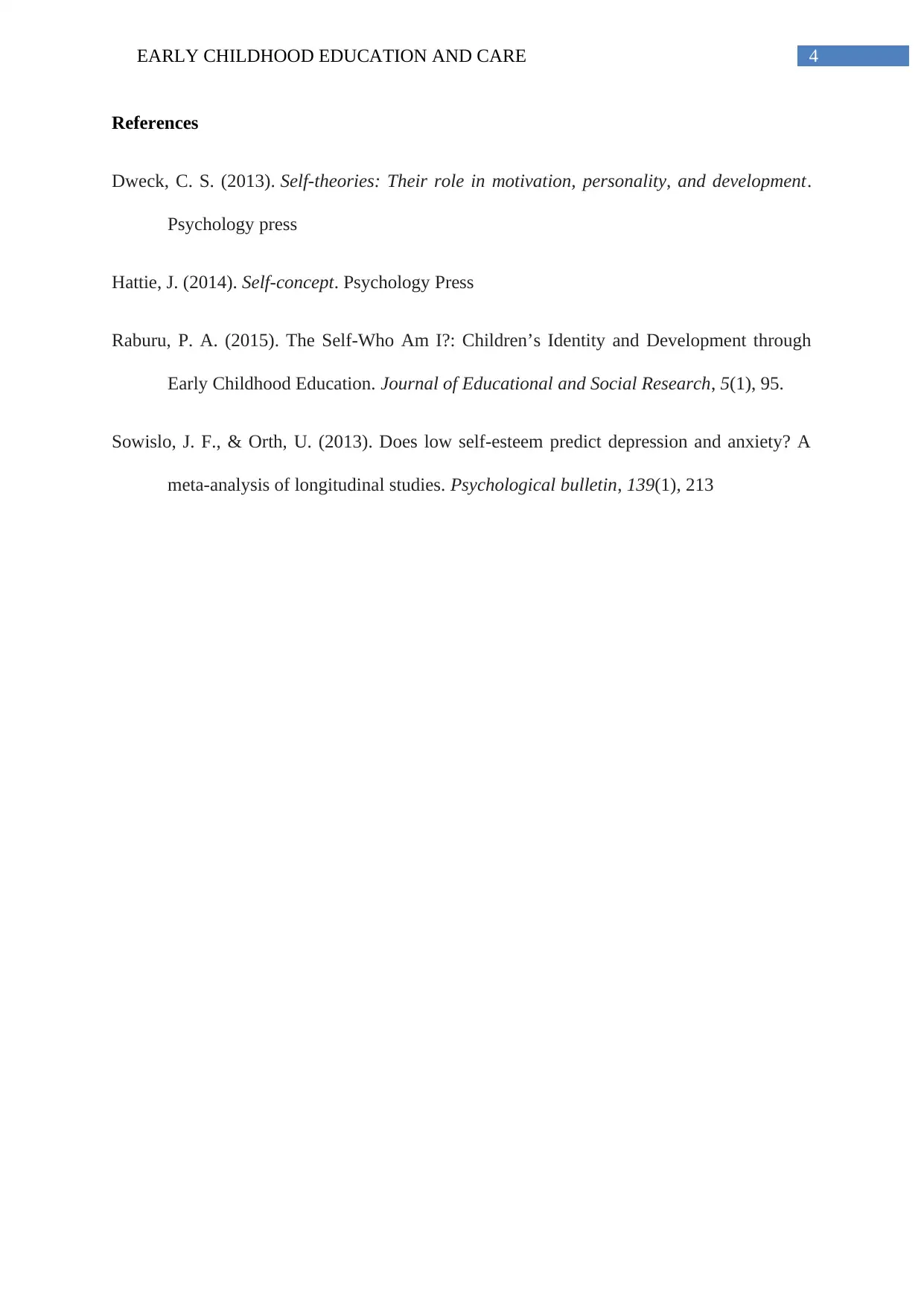Early Childhood Education: Developing Self-Concept, Esteem, Identity
VerifiedAdded on 2023/06/08
|5
|724
|169
Essay
AI Summary
This essay delves into the critical aspects of self-concept, self-esteem, and self-identity during early childhood. It highlights how children develop a sense of self through relationships, interactions, and experiences, particularly between the ages of three and six. The essay emphasizes the descriptive nature of self-image in preschoolers and the gradual shift from individual to group awareness as children enter kindergarten. It underscores the importance of fostering self-esteem through encouragement and age-appropriate experiences, enabling children to develop confidence and resilience. Furthermore, the essay discusses how peer relationships and play contribute to the formation of self-identity, which is shaped by the environment, values, and individual development of each child. The theories presented suggest that early childhood programs play a vital role in nurturing self-esteem and laying the foundation for future relationships.
1 out of 5











![[object Object]](/_next/static/media/star-bottom.7253800d.svg)